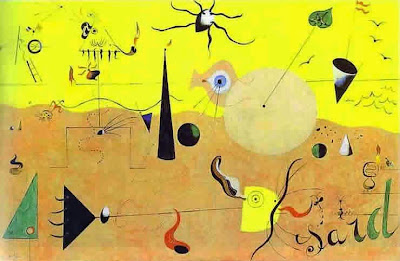Herbert Bayer was a painter, architect, graphic designer, sculptor, photographer,industrial designer, and considered one of the last master's of the Bauhaus Design School, founded in 1919 in Weimar Germany.
Umeskinder, 1933, Herbert Bayer, private collection
Bayer was a pioneer in experimental typography design, using the photomontage technique creating advertisements based in the avant guard arts as an art director for clients such as the Container Corporation of America, working under Walter Paepcke, the CEO. Also work with Paepcke included design consultation on the unique and enduring architecture of the Aspen Institute, in Aspen Co.
Aspen Institute, Herbert Bayer, Architect, Aspen CO
At one point Bayer also served as the art director for Vogue Magazine's Berlin offices, before having to flee with his family from the Nazi propaganda officials, in 1938, to America, with only $25 to his name, as he was considered on of Hitler's Degenerate artists and was married to a jewish woman. In his later years he worked for the Atlantic Richfield Company as an art director, while also continuing to create fine art works and architecture for his own expression for museums, galleries, public institutions, as well as corporate and private collectors.
Bayer also studied under Vasily Kandinsky, when he was first enrolled in 1921 as a student at the Bauhaus, where he specialized in mural painting. I think his later works still retain elements of those early Bauhaus influences.
Herbert Bayer was born in Haag Austria, in 1900, and died at his home in Montecito CA, in 1985, at the age of 85.














